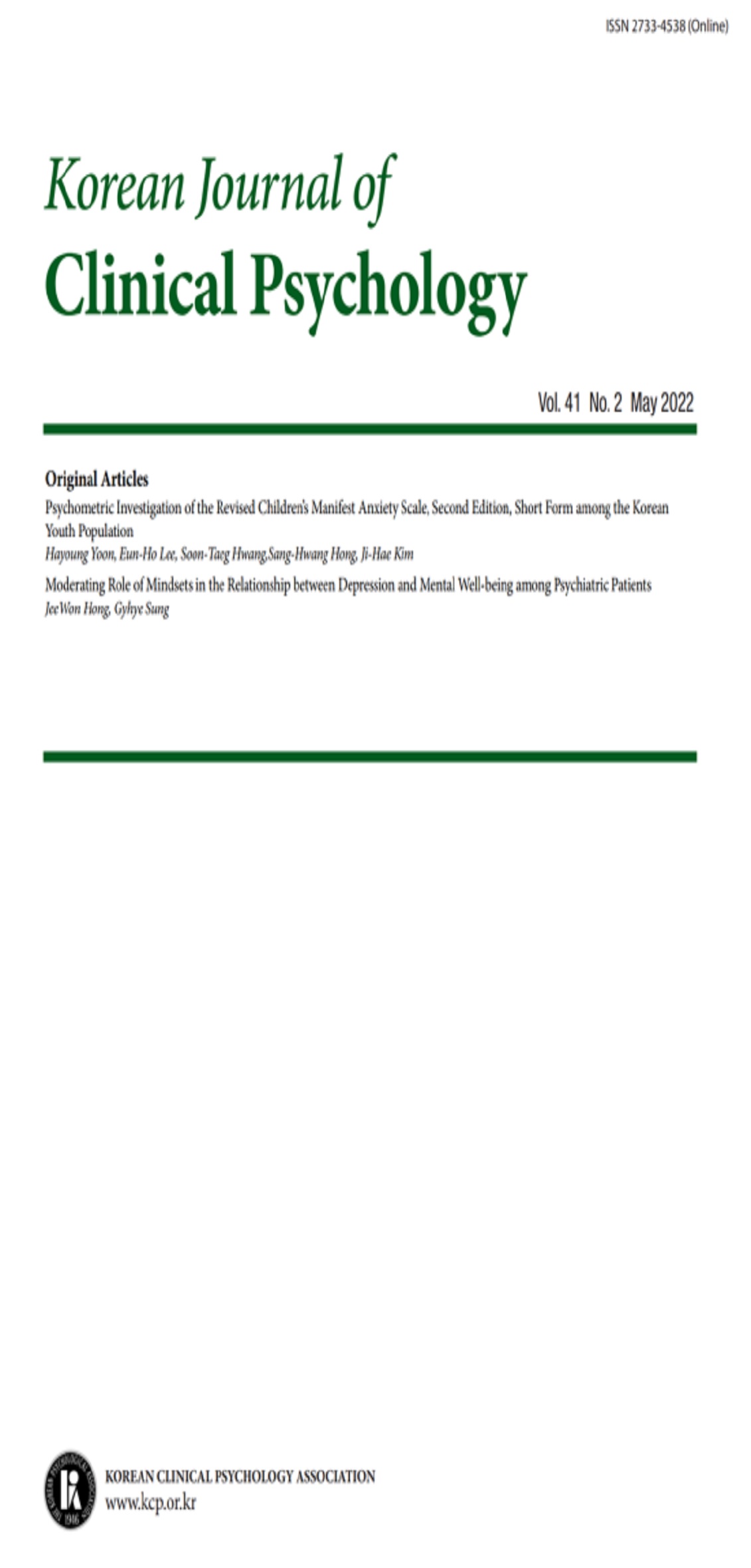open access
메뉴
open access
메뉴 E-ISSN : 2733-4538
E-ISSN : 2733-4538

김홍근(1999)은 K-WAIS 표준화 표본의 연령 및 학력별 IQ 평균을 이용한 병전 지능 추정법을 제안한 바 있다. 본 논문의 목적은 김홍근이 제안한 병전 지능 추정 방식을 보다 타당한 방향으로 개정하는 것이다. 김홍근이 제안한 방식은 K-WAIS 표준화 표본의 연령 및 학력별 IQ 평균을 근거로 한다. 본 논문에서 수정 제안한 방식은 K-WAIS 표준화 표본의 출생 연도 및 학력별 IQ 평균을 근거로 한다. K-WAIS의 표준화는 1991년 행해졌으며 규준의 급간이 10년 단위로 되어 있다. 따라서 표준화 이후 10년이 지난 2001년부터는 병전 지능 추정에서 연령 또는 출생 연도를 고려할 것인가의 선택이 특히 중요해진다. K-WAIS 표준화 표본을 분석해보면 동일 학력이라도 연령이 높을수록 IQ 평균이 더 높다. 이러한 연령별 차이는 생활 연령과는 무관하고 동시대 출생인(cohort)별로 교육 기회가 달랐던 것과 관련된 현상으로 해석된다. 따라서 병전 지능의 추정에서 피검자의 연령 대신 출생 연도를 고려하는 것이 보다 타당하다고 제안하였다.
Kim(1999) has proposed a method of estimating premorbid intelligence that is based on the K-WAIS norm data. The purpose of the present study was to modify Kim's method of estimating premorbid intelligence. Kim's method uses subjects' age and years of education as predictors of premorbid intelligence. The present method uses subjects' year of birth and years of education as predictors of premorbid intelligence. Ten years have passed since the standardization of K-WAIS and the scale uses 10-year interval in age-grouping. Thus, 2001 is the critical year in which use of subjects' year of birth rather than their age as a predictor of premorbid intelligence makes a real difference. The K-WAIS norm data show that of subjects with the same level of education, the mean IQ of older subjects is higher than the mean IQ of younger subjects. This difference between older and younger subjects is not related to chronological ages but to cohort differences in education opportunity. Thus, it is more valid to use subjects' year of birth rather than their age as a predictor of premorbid intelligence.
